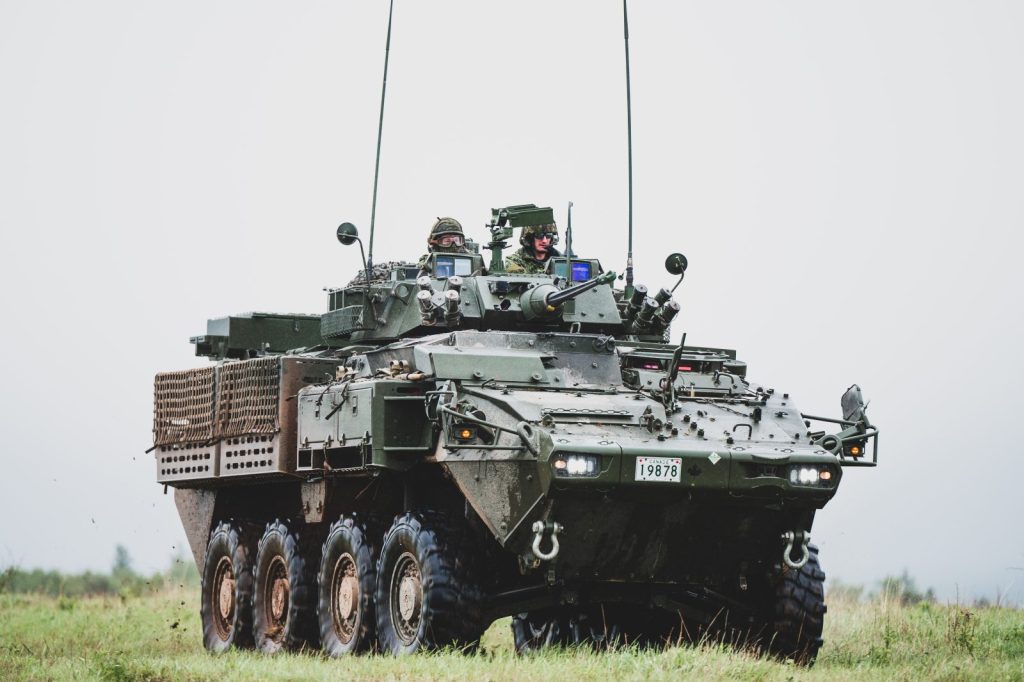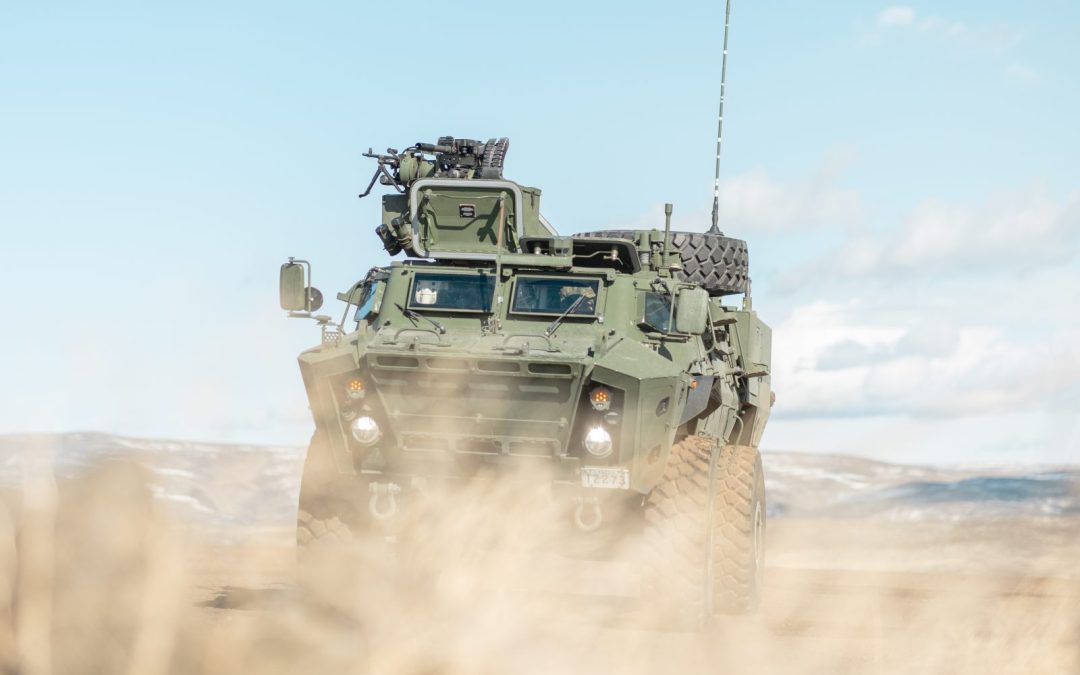By Canadian Army Today Staff
When the Land Vehicle Crew Training System (LVCTS) eventually opens doors on five new simulation centres across the country, it will launch the Army into a new world of networked and immersive individual and collective training.
An adaptable system, LVCTS is expected to offer greater diversity of training scenarios, threats, terrain, and environmental conditions than are possible in live exercises at the Army’s main bases — all quickly repeatable and captured for playback, evaluation, and debrief.
Moreover, the new high-end simulators and task trainers will significantly reduce wear and tear on combat vehicle fleets, reducing the maintenance burden and fuel consumption. They could even help the Department of National Defence lower its greenhouse gas emissions.
Exactly when those doors open, though, could be a ways out. The Army is projecting an initial operating capability by 2028 and fully operational training centres by 2031.
In 2023, five teams of suppliers were approved to compete for the LVCTS project following an invitation to qualify issued by Public Services and Procurement Canada in late 2022. The bid teams include CAE, with Elbit Systems as a major subcontractor; General Dynamics Mission Systems–Canada; Raytheon Canada with Krauss Maffei Wegmann as a major subcontractor; Rheinmetall Canada as a prime contractor, with Rheinmetall Electronics, Lockheed Martin Canada and Lockheed Martin Training and Logistics Solutions as subcontractors; and Thales Canada with Thales AVS France, Thales Australia, Calian and Simfront Simulation Systems as subcontractors.
Over the past 12 months, the project team has shared portions of a draft request for proposals (RFP) with those companies, and is anticipating the release of a final RFP in 2024.
The Army’s core mandatory requirements are a training system that allows for the conduct of multiple simultaneous individual and collective training events for the crews of its Light Armoured Vehicle 6.0, the Leopard 2 Main Battle Tank, and the Tactical Armoured Patrol Vehicle, with a high degree of realism, up to the combat team level.
It is seeking purpose-built facilities at the garrisons in Gagetown, Valcartier, Petawawa, Edmonton and Shilo, each with a family of high, medium and low fidelity simulators, all supported by an integrated operational and maintenance program that has a minimal impact on Army human resources.
The project budget is pegged at between $250 million to $499 million.
The back and forth with industry through the draft RFP process and an earlier request for information have not altered those requirements, but the engagement has “helped to inform and evolve the project’s Statement of Work and many important project details,” said Major Jeff Code of the Directorate of Land Requirements (DLR).
“I cannot emphasize how valuable the engagements with industry … have been over the past three to four years,” he said. “It has informed the team by allowing us to consider where innovations and technological trends in simulators and training technology are going. This has enabled the project team to consider solutions that are cost-effective and innovative, while reducing project risks.”
The interaction has helped the project team to “devised a path forward to allow the resulting contractor of the LVCTS to evolve with new technologies and adapt to changes to the Canadian Army’s capabilities once the infrastructure is built and the simulation systems are operational,” he added. That will ensure the LVCTS remains current with the threat environment and training advances over its expected 25-year lifespan.

Candidates from 4th Engineer Support Regiment’s Light Armoured Vehicle VI Crew Commander Course conduct their field training exercise in Gagetown in June 2023. Photo: MCpl Samuel Martell
Once it is connected to the Army’s Virtual Training and Experimentation Network (VTEN), the LVCTS is intended to be one of the key pillars of what is being called the Future Integrated Training Environment (FITE) initiative, which is intended to integrate several future Army simulation projects as well.
“This will allow a larger, more dispersed training audience to operate together in the same training event,” Code noted. “The objective is to integrate the different types of simulation and simulators, allowing specific training audiences to take advantage of the various functionalities of those different systems, enabling potentially a real-time interaction in the virtual environment and more realistic virtual interactions.”
The aim is a training experience that will improve the competencies of the entire training audience.
The project team looked at the simulation systems of NATO and ABCANZ (America, Britain, Canada, Australia and New Zealand) army partners. One of the underlying principles of the FITE concept is better interoperability with allies to enable large scale, networked training.
There remains significant coordination, policy alignment, standardization of requirements, and other key considerations among the Army, Royal Canadian Navy, and Royal Canadian Air Force and allies, Cole noted, “which is being looked at through several different working groups.”
The most influential lesson learned from allies, however, “is the importance of tailoring the level of accuracy of the simulation to the training being done,” he said. “By tailoring the fidelity of the simulator used to the type of training being conducted, and the training requirements and objectives to the simulator fidelity, [that] enables for a more cost-effective use of resources and allows for the acquisition of more simulators of varying degrees of fidelity.
“For example, purchasing a limited number of high-fidelity simulators in order to train specific tasks that require a high degree of physical replication of the interior of the vehicle fleet, can also be balanced with acquiring a larger number of lower fidelity simulators which are more tailored to process driven and integration training.”
The LVCTS is being designed to evolve with the Army’s training needs, he added, and will bring a number of indirect benefits to the Army.

